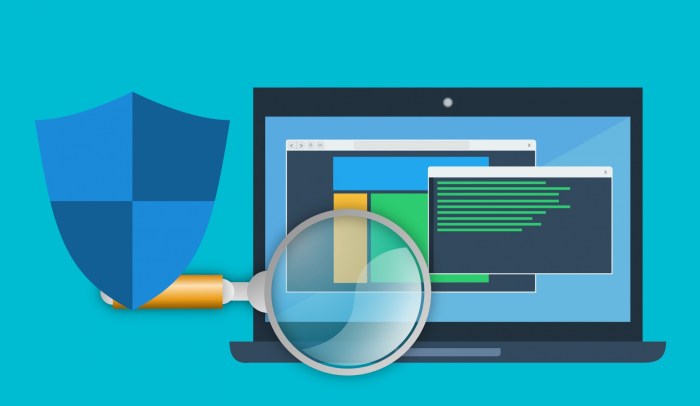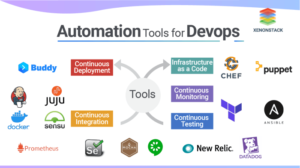
Software updates and version control are vital components in the digital realm, ensuring that systems remain secure and functional while fostering collaboration among developers. Regular updates not only patch vulnerabilities but also enhance usability and introduce new features, thereby improving the overall user experience. In tandem, version control systems play an essential role in managing software projects, allowing teams to track changes, collaborate efficiently, and maintain a historical record of their work.
As technology evolves, understanding the dynamics of software updates and version control becomes increasingly important. By automating updates and implementing best practices in version control, developers can ensure smoother workflows and reduced downtime. This discussion navigates through the intricacies of these topics, highlighting their significance in today’s fast-paced digital environment.
Software Updates

Regular software updates are crucial for maintaining the security, functionality, and overall performance of any software application or system. They not only patch vulnerabilities that could be exploited by malicious entities but also introduce new features and enhancements that improve user experience. Staying current with software updates helps organizations avoid potential security breaches and ensures they benefit from the latest technological advancements.There are several types of software updates that are essential for keeping systems running smoothly.
Understanding these different types is important for managing software effectively.
Types of Software Updates
Software updates can be categorized into several key types, each serving a unique purpose in the lifecycle of an application. The following provides a detailed overview of these types:
- Security Patches: These updates are released to fix vulnerabilities in software that could be exploited by cybercriminals. Regular application of security patches is vital to protect sensitive data from breaches and cyber-attacks.
- Feature Updates: These updates introduce new features or enhancements to existing functionalities. They are designed to improve the user experience and may incorporate user feedback or new technologies.
- Bug Fixes: These updates resolve specific issues or bugs that may hinder the performance of the software. They enhance reliability and ensure that users can operate the software without encountering problems.
- Performance Improvements: Sometimes updates focus on optimizing the software’s speed and efficiency. These updates can enhance load times and reduce resource consumption, making the software run smoother.
- Version Upgrades: Major version updates typically bring significant changes and new features, often requiring users to adapt to a new interface or functionality. These updates might also include the removal of outdated features.
To keep systems up-to-date without manual intervention, automation of software updates is highly beneficial. This not only saves time and resources but also minimizes the risk of outdated software vulnerabilities.
Methods for Automating Software Updates
Implementing automation for software updates helps ensure that systems remain current with minimal effort from users or IT teams. Here are some methods to achieve this:
- Utilizing Built-in Update Managers: Most operating systems and applications come with built-in features that allow automatic updates. Enabling these settings can ensure that software updates are downloaded and installed as soon as they are available.
- Third-party Update Tools: There are various third-party tools available that can manage updates across multiple applications and systems. These tools can centralize the update process and provide notifications about new updates.
- Scheduled Update Checks: Setting up scheduled tasks to check for updates at regular intervals ensures that software is consistently monitored for the latest versions. This can be done using scripts or system utilities.
- Group Policy for Enterprise Environments: In organizational settings, IT administrators can use group policies to manage updates across all devices within the network. This ensures uniformity and compliance across the organization.
Regular software updates not only enhance security but also improve functionality, ensuring a seamless user experience.
Version Control Systems
Version control systems (VCS) play a crucial role in modern software development, allowing teams to manage changes to source code over time. These systems enable developers to track revisions, collaborate seamlessly, and maintain a history of project modifications, which is essential for ensuring project integrity and facilitating teamwork.The advantages of using version control systems in software development are numerous. They not only help in maintaining a record of changes but also enhance collaboration among team members, provide a safety net for recovering lost work, and offer a structured way to manage codebases.
With a VCS, multiple developers can work on different features simultaneously without the risk of overwriting each other’s contributions. This fosters a more efficient workflow and allows for better project management.
Advantages of Version Control Systems
Utilizing version control systems brings about several benefits that significantly improve the software development process. Here are the key advantages:
- Collaboration: Multiple developers can work on the same project without conflicts. Changes from different team members can be merged effectively.
- Change Tracking: Every change made to the codebase is recorded, providing a history that can be reviewed at any time.
- Reversibility: Mistakes can be undone easily, allowing developers to revert to previous versions of the code if needed.
- Branching and Merging: Developers can create branches to work on features independently without affecting the main codebase, which can later be merged back seamlessly.
- Backup and Restoration: VCS serves as a backup solution, protecting against data loss and enabling recovery of previous versions.
Setting Up a Version Control System
Setting up a version control system for a software project is a straightforward process that enhances code management. Here’s how you can establish one:
1. Choose a Version Control System
Select from popular options like Git, Subversion (SVN), or Mercurial based on your team’s needs.
2. Install the VCS Software
Download and install the version control software on your machine or set it up on a server.
3. Create a Repository
Initialize a new repository for your project, which will store all your versioned files. In Git, this is done using the command `git init`.
4. Add Files
Add your project files to the repository. This can be done using the command `git add .` in a Git environment.
5. Commit Changes
Save your changes with a commit message that describes the modifications. This is executed with `git commit -m “Initial commit”` in Git.
6. Set Up Remote Repository
If you want to collaborate with others, set up a remote repository on platforms like GitHub or Bitbucket, and link it to your local repository with `git remote add origin [URL]`.
7. Push Changes
Upload your local commits to the remote repository using the command `git push -u origin master`.
Best Practices for Managing Version Control
Efficient management of version control systems can significantly enhance collaboration among developers. Following these best practices will ensure smoother workflows:
- Commit Often: Frequent commits help capture the progress of work and make it easier to track changes.
- Use Meaningful Commit Messages: Clear, descriptive messages should accompany each commit to help others understand the changes made.
- Branching Strategy: Implement a branching model (like Git Flow) to organize the development of features, fixes, and releases logically.
- Regularly Pull Changes: To avoid merge conflicts, developers should frequently pull changes from the remote repository to stay updated with others’ contributions.
- Review Code: Establish a code review process to maintain code quality, facilitate knowledge sharing, and identify potential issues early.
- Tag Releases: Use tags to mark specific points in your project’s history, such as releases, making it easier to identify stable versions.
Related Technologies
In the ever-evolving landscape of technology, software updates play a crucial role in maintaining the integrity and performance of various systems, particularly in areas like web hosting and domain names. These components work in tandem to ensure that online platforms remain operational, secure, and user-friendly. Understanding the relationships between these technologies provides deeper insights into their interdependencies and the impact of software advancements.
Relationship Between Software Updates and Web Hosting & Domain Names
Software updates are essential for web hosting services and domain management. Hosting platforms require regular updates to their server software, which includes improving security protocols and enhancing performance. A well-maintained server ensures that websites load efficiently and remain protected against potential threats. Domain names, the gateways to web content, also rely on updated systems for proper functionality. For instance, DNS servers, which translate domain names into IP addresses, need to be consistently updated to reflect changes and maintain accuracy.
- Security Enhancements: Regular software updates minimize vulnerabilities that could be exploited in a hosting environment.
- Performance Boosts: Updates often include optimizations that improve server speed and reliability, crucial for user retention.
- Compatibility Checks: Keeping software up-to-date ensures compatibility with various web technologies, which is vital for seamless user experiences.
Influence of Software Updates on Web Design and Development Practices
The realm of web design and development is significantly shaped by software updates, as they introduce new features and capabilities that can enhance user experience. Developers need to stay current with these updates to leverage advancements in design frameworks, content management systems, and programming languages. Ignoring these updates can result in outdated practices, impacting both aesthetics and functionality.
- Responsive Design Frameworks: Updates may introduce new CSS properties or JavaScript functions that allow for more flexible and responsive designs.
- User Experience Enhancements: Features from updates, such as improved APIs, allow developers to create more interactive and engaging user experiences.
- Integration of New Technologies: Software updates often pave the way for incorporating modern technologies, such as AI and machine learning, into web applications.
Effective Version Control and Monetization Through Software Solutions
Version control is integral to the development lifecycle of software applications, especially for those generating revenue online. By utilizing version control systems, developers can efficiently manage code changes, collaborate more effectively, and roll back to previous versions if necessary. This reliability is essential for businesses that rely on software solutions for their revenue streams.
- Reduced Downtime: Effective version control minimizes disruptions by allowing for quick fixes and rollbacks, ensuring continuous availability of services.
- Enhanced Collaboration: Teams can work simultaneously on different features without disrupting each other’s progress, leading to faster product launches.
- Quality Assurance: Version control helps maintain a clean codebase, reducing bugs and improving overall software quality, which is critical for customer satisfaction and retention.
Last Word

In conclusion, the interplay between software updates and version control is crucial for modern development practices. Regular updates safeguard systems while version control enables teams to work together seamlessly, leading to improved productivity and innovation. As we continue to embrace new technologies, prioritizing these aspects will not only enhance project outcomes but also ensure long-term success in the ever-changing landscape of software development.
FAQ Summary
What are the benefits of automating software updates?
Automating software updates helps ensure systems are always current, reduces the risk of human error, and saves time for developers to focus on more critical tasks.
How can version control improve team collaboration?
Version control allows multiple developers to work on the same project simultaneously without overwriting each other’s changes, promoting better teamwork and communication.
What should be included in a version control commit message?
A good commit message should be concise yet descriptive, summarizing the changes made and their purpose, which helps others understand the project’s history.
How often should software updates be performed?
Software updates should be performed regularly, ideally as soon as updates are released, to maintain security and functionality.
Can version control systems lead to better project outcomes?
Yes, by providing a structured way to track changes and collaborate, version control systems can significantly improve the quality and success of software projects.





